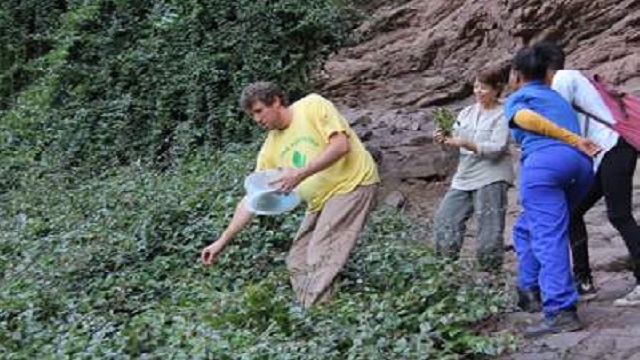
Sibudu is a proposed UNESCO World Heritage Site that has high archaeological importance, it is a model for the South African Middle Stone Age dating back to 77 000 years ago. It is situated in the Qwabe area near Tongaat in KwaZulu Natal. The site has bought renowned archaeologists to the dig since its first excavation in 1998 where artefacts have been studied and subsequently displayed all over the world. The oldest bed was found at this site where there is evidence that sedges were used to sit and sleep on, other artefacts such as stone blades and shell beads have also been found here, including the world’s oldest arrowhead.
Pereskia (Pereskia aculeata), an invasive plant originally from Brazil, has been identified as a problem at the Sibudu site for a long time as it destroys indigenous plants and covers large parts of the area around the dig. This is why the secretary of the Friends of Sibudu, Noreen Ramsden, contacted Dr Iain Paterson from the BCRG to release a biological control agent, the Pereskia stem-wilter (Catorhintha schaffneri) at the site. This Biological control agent was first released in 2014 so it is a relatively new agent on Pereskia but it is showing some promising results in other sites around the country. On the 13th of April 2016, we released 200 stem-wilters in the hope that they will establish in the Sibudu area and do some damage to the problematic Pereskia. We will return in September where we will access the agent's population size and the damage thus far.
